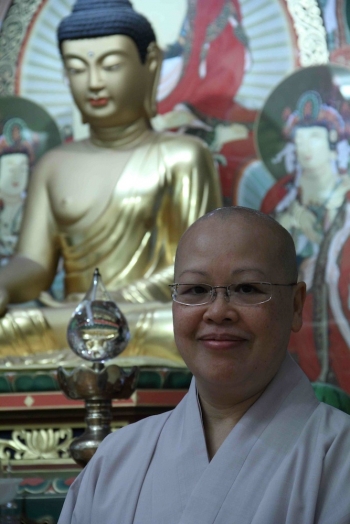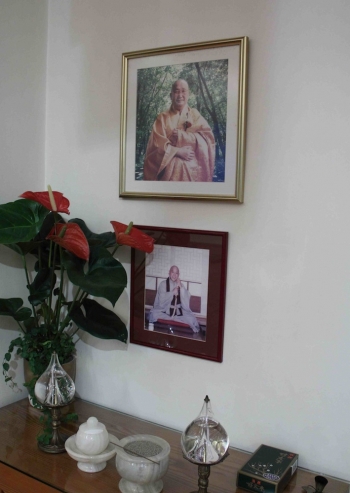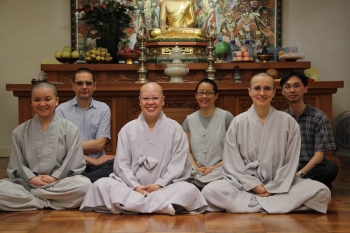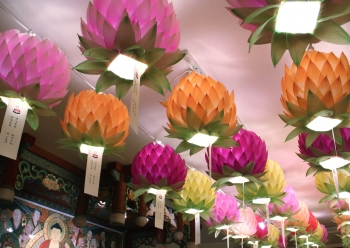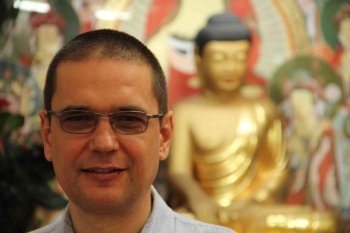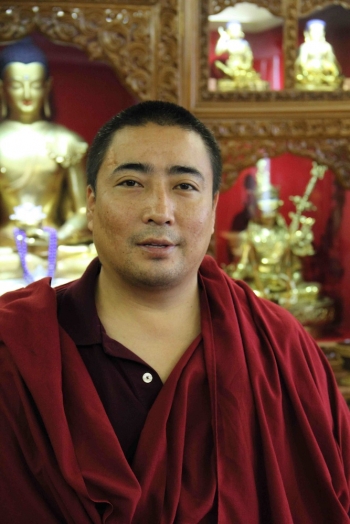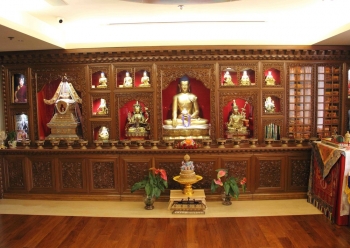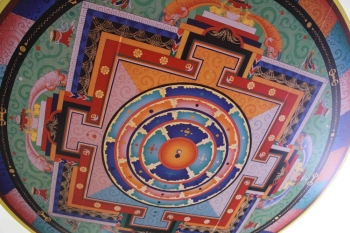Finding places in Hong Kong that provide services in English can be a bit of a tall order. Religious organizations are no exception. For one reason or another, the language has never really caught on with the locals, despite the fact that it’s been one of the city’s official languages for over 170 years.
This means that for the expat who has yet to master Cantonese (some do, many don’t), getting around Hong Kong and learning its ins and outs can be a bit of a challenge. But never fear, dear reader. That’s what I’m here for: to do the legwork so you don’t have to.
There are over a dozen distinct Buddhist organizations in Hong Kong. Most, including some branches of large international organizations, operate primarily in Cantonese. Of the ones that do operate in English, I found two to be quite accessible and welcoming.
First up is Su Bong Zen Monastery. Located in Causeway Bay, Su Bong is an offshoot of Korean Chogye Buddhism although, funnily enough, they only have a small number of Korean members (primarily flight crew on stopovers).
Su Bong offers meditation sessions and Dharma talks several times a week. The Dharma talks are group sessions where members of the congregation ask questions and the teachers (both monastic and laypeople) respond with stories.
For those who are more serious in their pursuit of the Buddhist path, Su Bong also offers Kong-an interviews: one-on-one question and answer sessions between student and teacher that allow teachers to assess the students’ progress and understanding.
Group sessions are conducted simultaneously in Cantonese and English, with members of the congregation acting as interpreters. The teachers make sure to pause regularly when speaking so that everyone has a chance to understand what is being taught.
I found the teachers to be extremely friendly and forthcoming when I spoke to them, even to the point where a group interview session went an hour longer than was originally planned.
The staff at Su Bong is a rather diverse group of individuals. The head of the center is Zen Master Dae Kwan, a half-Malay half-Chinese nun who began her training in the jungles of Thailand. She is assisted by a vice-abbess from Lithuania and a head layperson teacher from Poland. They share a common link through Zen Master Seung Sahn, a globetrotting Korean monk who was among the first to spread the Korean style of Buddhism around the world. It is wondrous to hear their stories and how they started down the Buddhist path.
The other center I recommend is Karma Samten, a Tibetan Buddhist center located in Mongkok. With its dark wood paneling and constantly burning butter lamps, stepping through the door at Karma Samten makes it seems as if you’re somewhere much more rustic than thoroughly urban Mongkok.
The aroma from the butter lamps is particularly strong when you first step inside and, to me at least, can be simultaneously exotic and hunger inducing.
There are meditation sessions and religious services held multiple times a week that are conducted mostly in English. Members of the congregation act as interpreters for those who do not speak English (a sizeable chunk) and the monks make sure to regularly pause when speaking.
There are occasions, though, when the topic to be taught is considered to be particularly important so the monks at the center will hire interpreters and teach in Tibetan.
I found the people at Karma Samten to be a bit more aloof than those atSu Bong. Where as what started out as a one-on-one interview quickly turned into a group session at Su Bong, over at Karma Samten, I only ever got to speak with the Venerable Khenpo Kunga, the center’s resident teacher.
That is not to say that I did not feel welcome. The Venerable Khenpo Kunga, although a bit soft-spoken sat down with me for well over an hour and patiently answered all of my questions, and often re-explaining certain things, as I tried to keep all the new terms and names I was learning straight in my head and in my notes.
He even shared with me the story of how, as a boy in Nepal, he joined a monastery and started down his path towards becoming a monk not because he felt some sort of calling but because a friend of his had joined and he’d wanted to tag along.
He was also extremely helpful in getting me an interview with a visiting speaker at Karma Samten, a former teacher of his, by getting me through the crowd wishing to have a word with the speaker. And when I thanked him for all of his help, the Venerable Khenpo Kunga gave me a brotherly tap on the arm which, for one reason or another, made me feel very much at home.
If you really are interested in starting down the Buddhist past, regardless of which branch you choose, I suggest to check out Karma Samten and Su Bong Zen Monastery for yourselves while in Hong Kong.
I’m sure you’ll be happy with what you find.
For more information:
Su Bong Zen Monastery: http://www.subong.org.hk/main.asp
Karma Samten Centre: http://www.kagyucentre.com/?page_id=63
